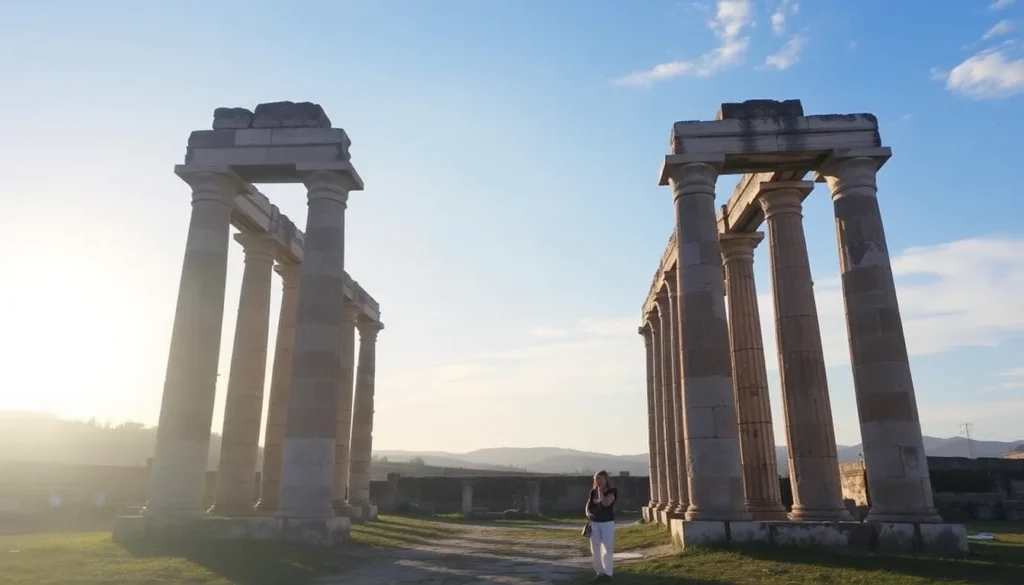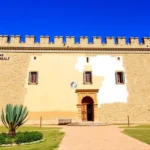Tips for Visiting the Roman Ruins of Volubilis

Have you ever imagined exploring ancient Roman ruins in the heart of Morocco? It might sound surprising, but the vast territory that the Roman Empire once occupied included remote regions far beyond Italy's borders. One such remarkable site is Volubilis, a stunning testament to Roman architecture and culture that flourished in North Africa. In this article, we will guide you through everything you need to know about visiting Volubilis, from its rich history to practical tips for making the most of your trip. Whether you are a history enthusiast or simply looking for a unique travel experience, a visit to the Roman ruins of Volubilis promises to be unforgettable.
Exploring the fascinating history of Volubilis
As the capital of the Roman province of Mauritania Tingitana, Volubilis was a thriving urban center adorned with numerous public buildings, many of which still stand in impressive ruins today. Its strategic location and fertile land, particularly known for olive oil production, allowed the city to flourish, boasting a population of around 20,000 inhabitants during its peak.
In 285 A.D., amidst a significant political crisis, the Romans abandoned Volubilis. However, the city did not become deserted; it continued to be inhabited by Berber tribes and eventually became a refuge for Moulay Idriss, the father of modern Morocco, in 789 A.D. His arrival marked a brief revival for Volubilis, but his successor, Idriss II, moved the capital to Fez, leading to the city's decline.
Volubilis faced two devastating blows: first, the establishment of Meknes as a new capital in the 18th century, which involved repurposing materials from its ruins; second, a catastrophic earthquake in 1755. In recent decades, extensive excavation and restoration efforts have taken place, and in 1997, Volubilis was designated a UNESCO World Heritage Site. This recognition brings to light the historical significance of this archaeological wonder.
Location and how to reach Volubilis
Situated in northern Morocco, Volubilis is nestled above the Middle Atlas mountain range. The nearest cities are Meknes, approximately 30 kilometers away, and Fez, located around 80 kilometers from the ruins. Nearby, you can also visit the sacred city of Mulay Idriss, adding even more value to your trip.
The best way to explore Volubilis is by car, offering you the flexibility to enjoy the stunning landscape. If you prefer not to drive, taxis are available: from Meknes, expect to pay around 300 dirhams, and from Fez, about 500 dirhams. These taxis can be rented for your round trip, with the driver waiting for you while you explore. Don’t forget to haggle!
You can also take a shared taxi (Grand Taxi) from Meknes to Mulay Idriss and then continue to Volubilis, which is a more cost-effective option, but be prepared to wait for the taxi to fill up.
For a guided experience, consider joining a tour from Fez that includes Mulay Idriss and Meknes, ensuring you don’t miss any highlights. This option is particularly recommended for those eager to delve deeper into the history and significance of the Roman ruins of Volubilis.
Must-see highlights during your visit to Volubilis
Upon purchasing your ticket, you'll receive a map outlining a suggested route for your visit. Below are the most significant sites to explore in Volubilis, presented in the order recommended for the best experience:
✓ Center for Interpretation
Your visit begins at the Center for Interpretation, a small museum that introduces you to the history of Volubilis. Here, you'll find outdoor exhibits showcasing Roman life, along with the first glimpses of stunning columns, mosaics, and even a traditional olive oil mill.
✓ House of Orpheus and its mosaic
Next, ascend a gentle slope to the House of Orpheus, a spacious residence featuring several rooms, including a dining area adorned with the famous Orpheus mosaic. This intricate artwork depicts Orpheus playing his harp surrounded by animals, and it exemplifies the exquisite mosaic artistry that Volubilis is renowned for.
✓ The Galiano Baths
Continuing your journey, you'll arrive at the public baths, a significant aspect of Roman cities. These baths included multiple bathing rooms, changing areas, and exercise facilities, utilizing advanced underground heating systems. This luxurious aspect of Roman life is sure to impress anyone visiting the site.
✓ Temple of Jupiter Capitolino
As you enter the forum—the social and political heart of Volubilis—you'll see the Temple of Jupiter Capitolino, dedicated to the chief Roman deities: Jupiter, Juno, and Minerva. The temple, with its majestic columns, stands elevated on a podium, reflecting the architectural prowess of Roman engineering.
✓ The Basilica
Across from the forum stands the Basilica, where important civic and legal matters were addressed. Its interior boasts rows of columns, and the exterior features a striking wall with brick arches, marking it as one of the most significant buildings in Volubilis.
✓ Arch of Caracalla
The Arch of Caracalla is perhaps the most visually striking ruin. Built in 217 A.D., it honors Emperor Caracalla, who granted Roman citizenship to provincial inhabitants. An inscription on the arch praises the emperor for his exceptional kindness, and it once featured a grand bronze sculpture of a chariot drawn by six horses.
✓ House of the Ephebe and House of Columns
Located north of the arch, the House of the Ephebe is known for its beautiful mosaic, which can only be viewed from a distance. The adjacent House of Columns gets its name from the various column styles found within its structures.
✓ House of the Labors of Hercules
This house displays a magnificent mosaic illustrating the Twelve Labors of Hercules, each depicting mythological challenges faced by the hero. The detail and artistry of this mosaic are truly captivating.
✓ Decumanus Maximus
Finally, stroll along the Decumanus Maximus, the principal street of Volubilis. This avenue, which once connected the city from the north gate to the Arch of Caracalla, was lined with lavish homes and palaces decorated with intricate mosaics. Be sure to explore the Gordian Palace, the largest residence in the city, believed to have hosted the governor.
Ticket prices for visiting Volubilis
Entry to Volubilis costs 70 dirhams (approximately €6.50), with discounted tickets available for children under 12 at 30 dirhams. At the entrance, you can hire a specialized guide for an additional 120 dirhams, enriching your experience with detailed insights into the site's history. For those driving, there's free parking available right next to the entrance, although be cautious of individuals offering to 'guard' your car for a tip.
Visiting hours at Volubilis
Volubilis is open year-round, with gates opening at 8:30 AM. Closing times vary by season, from 5:00 PM in winter to 7:30 PM in summer. It’s advisable to check the official website for any updates before your visit.
Visiting the archaeological site of Volubilis is undoubtedly a must for anyone traveling through northern Morocco, especially as a day trip from Fez. We hope this guide helps you plan your visit to Volubilis and ensures you don’t miss any of the incredible sights waiting for you! To stay updated on our travels in Morocco, follow our Instagram stories.
For those looking to save on their travels, here are some helpful resources:
| Save on your trip |
| Find cheap flights to Morocco here |
| Book accommodation at the best prices here |
| Reserve activities in Spanish in Morocco here |
| Get a 5% discount on your travel insurance with IATI here |
| Book airport transfers here |
| Learn how to withdraw cash without fees here |
| Get a 5% discount on your eSIM from Holafly here |
| Rent a car with the best deals here |
| Discover the best travel books and guides here |
| Explore all our articles about Morocco |





Deja una respuesta